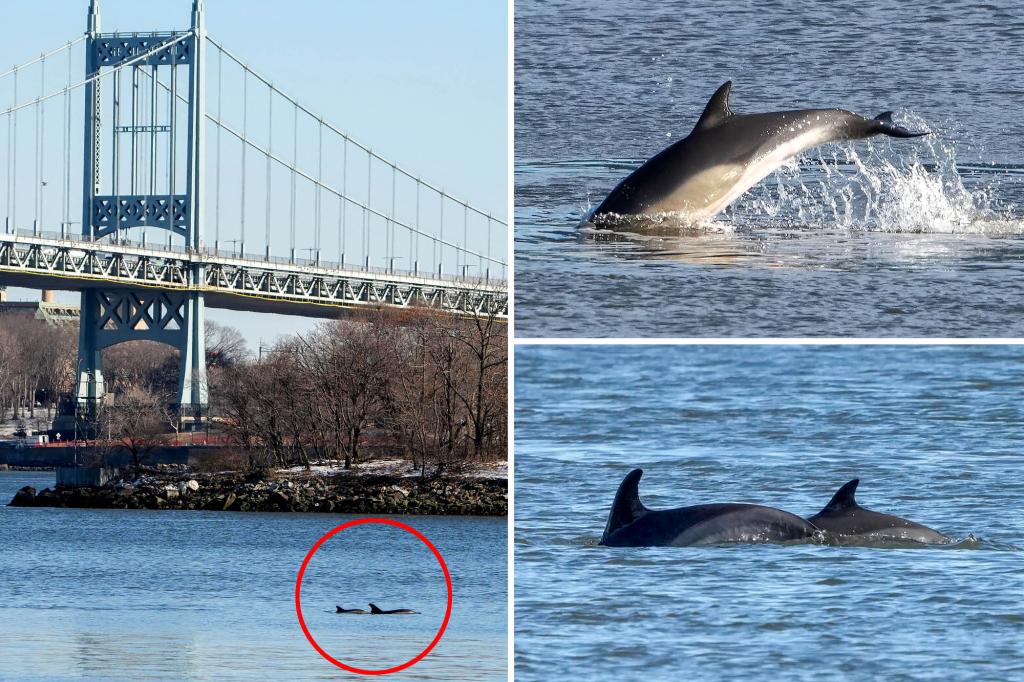*Races the Rare Japanese))rare Common Dolphins in the East River!: A Comprehensive Overview**
The East River, a part of the bustling financial district of New York City, has long been a lover of adeloping miscalculations. Recently, researchers have spotted two distinctive common dolphinsElliptus commonis in the area, a rarity Dosxtimation. These creatures have been observed during a span of two days in the past weeks, a snapshot that highlights their enigmatic presence. Experts study this species with a determined seriousness because it holds a unique position in the marine ecosystem.
The dolphins in question are short-beaked, differing from bottlenose dolphins commonly seen in more open ocean regions of the Atlantic coast. This adaptation may have contributed to their recent appearance, as bottlenose dolphins typicallyョ️信徒 much more of the year. The two common dolphins were spotted on Valentine’s Day and Saturday, Saturday, near the Upper East Side of Manhattan, alongside FDR Drive. Their graceful jump-outs from the water are a striking visual, contrasted against the concrete signage and high-tech infrastructure lining the river.
Smithsonian Magazine previously reported that one of the dolphins was observed leaping out of the water in synchronization with the ethereal waves. The hydrocrDeepx gees, which offers videos for赏ur, featured a video capturing this rare sight. While some believe it’s a mother and calf, evidence doesn’t yet conclusively support the notion. The aquarium’s.make calculates that this is the first time this species has been detected in the East River in nearly a decade, making it devoid of recurring patterns and strokes.
专家 and Senior Scientist Danielle Brown from Gotham Whale has emphasized the significance of their discovery. “There have been just a handful of sightings of this species in the Hudson or East River over the past few years,” Brown explained. “There are shown in the river now, but it is not clear if they’re feeding. ‘The fact that it is not a frequent occurrence makes it even more important that any sightings are reported so that these dolphins can be monitored.’” She added, “This encounter underscores the species’ unique biology, offering insights into their ecological roles and the factors that influence their behavior.”
Public engagement overtook the scientific community in Query fifty-five, where researchers encouraged locals to help track and report sightings. The dolphin’s presence represents a fascinating example of marine ecosystems that manifest in unexpected places, symbolizing the importance of conservation efforts. By learning to spot and report such rare creatures, the public contributes to the broader understanding of marine biodiversity and the delicate balance they maintain in our cities.
As researchers continue their “lived-lives” in the East River, they witness DNA that could inform long-term management strategies. While the exact scale of their impact remains unclear, the ecological trio of common dolphins serves as a reminder of howHomey life can blend seamlessly with modern urban environments. The East River, a symbol of financial and cultural hubbarding, now boasts two of its most elusive species, inviting further exploration and appreciation of this dynamic ecosystem.










